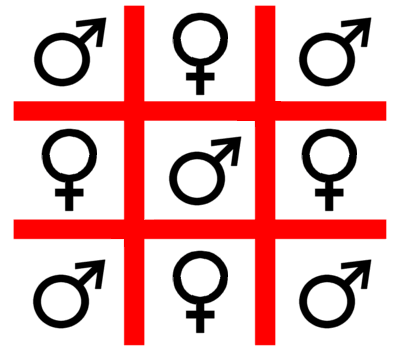
|
Excerpts fromEvolution and the Theory of GamesJohn Maynard Smith |
Miscellanous Mating Conflicts
The preceding discussion has been concerned with male-female conflicts over parental care. Parker (1979) has discussed other contexts in which conflict can arise; although his discussion is confined to insects, it has a general relevance. Because of the discrepancy in investment in gametes between males and females, males are likely to be less discriminating over mating than females (Bateman, 1948; Maynard Smith, 1956; Trivers, 1972). One particular form that this conflict can take has been pointed out both by Parker (1979) and Packer (1977a). The level of inbreeding depression beyond which it would no longer pay a male to mate with his sister is more extreme than the level at which it would not pay a female to mate with her brother. Consequently there is a range of levels for which selection would favour incestuous mating by one sex but not the other. The same will be true for distant outcrossing.
Fighting between males over females can be damaging to females. Parker reports that during fights between male dung flies (Scatophaga stercoraria), females can be injured, or even drowned in the dung. Female toads can also be drowned during inter-male fights. If, as in lions (Bertram, 1976) and langurs (Hrdy, 1974), male takeover results in infanticide, females may oppose takeover. Pre- and post-copulatory guarding is common in arthropods (Parker, 1974c). The advantage to the male, in achieving matings and in ensuring paternity, is obvious, but the practice must impose some cost on females, particularly if the female must carry the male around.
John Maynard Smith, Evolution and the Theory of Games, Cambridge University Press, Cambridge, 1982, pp. 129-130.